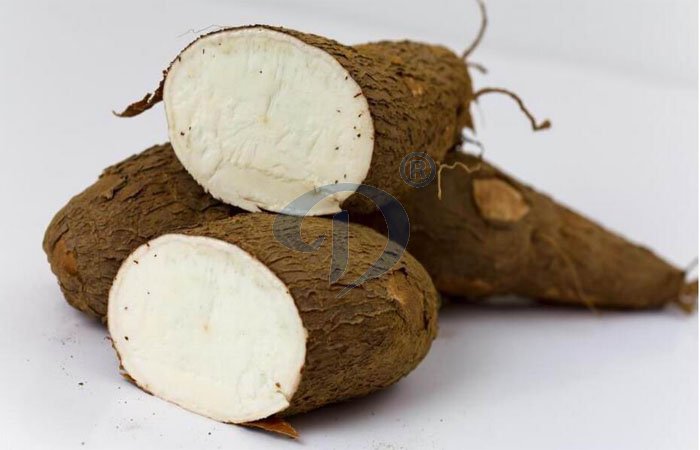How to make tapioca flour?
Wheat flour and corn starch are useful and versatile ingredients, but a number of less-common starches are equally valuable. One of those is tapioca, a tropical starch that's widely used in pudding and bubble teas. When ground to a fine flour, it can be used as a general-purpose thickener or as part of a gluten-free flour mixture. You don't need any specialized equipment to grind your own, just inexpensive kitchen appliances you probably already have.
What It Is?
Tapioca is made from dried cassava roots, a starchy staple that plays a potato-like role in the cuisines of tropical countries. It's most commonly formed into small "pearls," which absorb liquid and enlarge into gelatinous balls. In other words, those common, inexpensive tapioca pearls in your cupboard are exactly the same as the tapioca flour you buy at the health-food store. To use them as flour, all you need to do is grind them down to powder.
How to make tapioca flour?
A spice grinder, blender or food processor is all you need to make your own tapioca flour. Spice grinders have a relatively small capacity, and most will only turn out a few tablespoons of flour at a time. Depending on your specific model, a blender might manage to pulverize 1/4 cup to 3/4 cup of tapioca at a time. A full-sized food processor can usually cope with two or more cups of tapioca at once.
Step 1
Measure the tapioca pearls into the machine and process them, shaking occasionally, until they turn to fine powder. In a food processor or blender, you might opt to pulse the tapioca several times until it's partially powdered, then process continuously for several more seconds.
Step 2
Pour the ground tapioca through a sifter or fine-mesh strainer to remove any large particles.
Step 3
Return any coarse particles to the grinder along with fresh pearls and repeat until you have as much as tapioca flour you need.
Using the Tapioca Flour
As a thickener for sauces and baking, tapioca flour has strengths and weaknesses. It can give a heated sauce or gravy an oddly stringy character, which many diners find off-putting. That's one reason why it's made into pearls, which don't have the same texture. In fruit pies, on the other hand, tapioca flour shines. It leaves the fillings as glossy and beautiful as cornstarch does, but -- unlike cornstarch -- it isn't affected by freezing and thawing, and the fruit's natural acidity won't weaken its thickening effect. Its stringy texture is much less noticeable in a cold slice of pie, and it's further masked by the textures of the crust and fruit.

Tapioca
Leave a message
- WhatsApp:
+8613526615783
- Email:
sales@doinggroup.com
- Tel:
0086 135 2661 5783
- Phone:
0086 371 5677 1822
- Skype:
elina881130
- Address:
No.133 Yaozhai Road, Jinshui District, Zhengzhou City, Henan Province, China
-
 What is high quality cassava flour, how to produce high quality cassava flour ?
What is high quality cassava flour, how to produce high quality cassava flour ?
-
 Cassava starch manufacturing process
Cassava starch manufacturing process
-
 How to process cassava into cassava chips ?
How to process cassava into cassava chips ?
-
 Which kind of cassava peeling machine popular in Nigeria ?
Which kind of cassava peeling machine popular in Nigeria ?
-
 How to maintain cassava starch processing equipment ?
How to maintain cassava starch processing equipment ?
-
 How to extract cassava starch ?
How to extract cassava starch ?
-
 What is cassava flour used for?
What is cassava flour used for?
-
 How to make cassasva starch?
How to make cassasva starch?
-
 Water, electricity, steam and land deploy in starch processing plant
Water, electricity, steam and land deploy in starch processing plant
-
 How profitable is cassava starch made?
How profitable is cassava starch made?
-
 What is high quality cassava flour, how to produce high quality cassava flour ?
What is high quality cassava flour, how to produce high quality cassava flour ?
-
 How to process cassava into cassava chips ?
How to process cassava into cassava chips ?
-
 Cassava starch manufacturing process
Cassava starch manufacturing process
-
 How to maintain cassava starch processing equipment ?
How to maintain cassava starch processing equipment ?
-
 How to extract cassava starch ?
How to extract cassava starch ?
-
 How to make cassasva starch?
How to make cassasva starch?
-
 Water, electricity, steam and land deploy in starch processing plant
Water, electricity, steam and land deploy in starch processing plant
-
 How profitable is cassava starch made?
How profitable is cassava starch made?
Leave a message

Tel/Whatsapp:
+8613526615783



